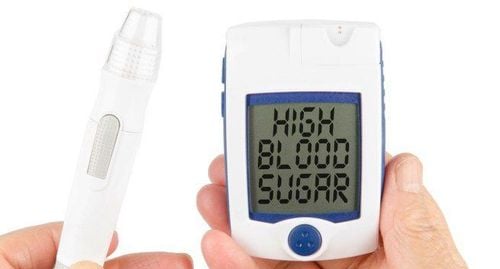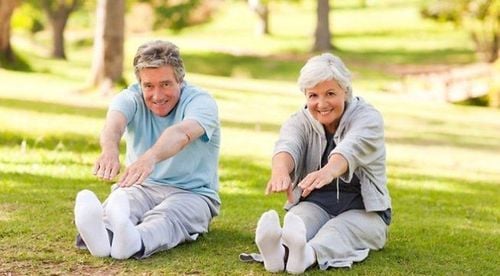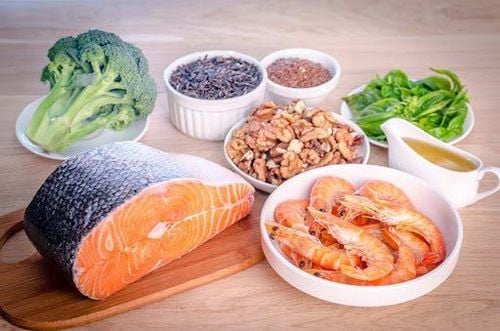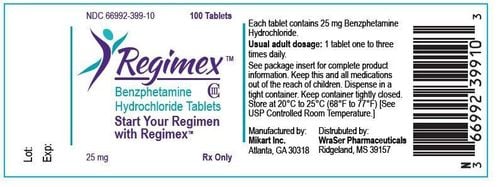This is an automatically translated article.
There is much debate about which type of exercise is better for your health: aerobic or anaerobic. So which is better for health and weight loss? Both aerobic and anaerobic exercise have benefits, and you should incorporate them into your exercise plan.1. What is Aerobic and Anaerobic?
Aerobic exercise, like walking, cycling or running, means you're moving your body, breathing faster, and increasing blood flow. It's the level of activity you can sustain for a long period of time. Anaerobic exercise, like sprinting or weightlifting, is short, high-intensity activity that requires maximum effort and cannot be sustained for long.1.1. Aerobic – aerobic exercise or aerobic metabolism Aerobic metabolism is the body's way of producing energy through the burning of carbohydrates, amino acids, and fats in the presence of oxygen. Burn here is to burn sugar, fat and protein for energy. Aerobic metabolism is used to produce energy for exercise and other bodily functions.
Aerobic metabolic exercises are endurance exercises in which a person's muscles move in a rhythmic and coordinated manner for an extended period of time. These exercises need oxygen for energy. Aerobic exercises increase a person's heart rate and breathing rate to deliver more oxygen to the body's muscles.
Examples of exercises that use aerobic metabolism such as brisk walking, running, cycling...
1.2. Anaerobic - Anaerobic Metabolism Anaerobic metabolism is the production of energy through the combustion of carbohydrates in the absence of oxygen. This happens when your lungs can't get oxygen into your blood to meet the energy needs of your muscles. It's usually only used for short bursts of activity, such as when you're sprinting while cycling or sprinting or lifting heavy weights. Without enough oxygen in the blood, glucose and glycogen stores cannot be completely broken down into carbon dioxide and water. Instead, lactic acid is produced, which can build up in the muscle and impair its function.
1.3. Difference Between Aerobic and Anaerobic The main difference between aerobic exercise and anaerobic exercise is:
How the body uses stored energy Intensity of exercise The amount of time a person can sustain exercise
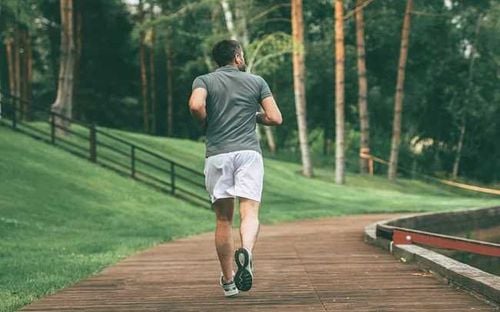
Tập thể dục aerobic, như đi bộ, đạp xe hoặc chạy, có nghĩa là bạn đang vận động cơ thể, thở nhanh hơn và tăng lưu lượng máu
In general, aerobic exercise helps increase endurance, while anaerobic exercise helps increase muscle mass and strength.
1.4. Similarities of Aerobic and Anaerobic A 2017 review noted that both aerobic and anaerobic exercise are beneficial for the cardiovascular system. Both types of exercise help:
Strengthen the heart muscle Promote circulation Increase metabolism Aids in weight management According to the Centers for Disease Control and Prevention (CDC), either type of exercise helps reduce a person's risk of the following health conditions:
Metabolic cardiovascular disease Type 2 diabetes Some cancers Dementia Dementia The American Psychological Association notes that exercise by any person beneficial for mental health, as well as physical health.
2. Aerobic and Anaerobic Benefits and Risks
2.1. Aerobic Benefits and Risks Benefits In general, aerobic exercises increase heart rate and breathing rate, promoting circulation. By doing so, they improve a person's heart health.Some of the potential benefits of aerobic exercise include:
Helps increase stamina and reduce fatigue Aids in weight management Lowers blood pressure Helps increase levels of “good” cholesterol and lowers cholesterol levels “bad” in the blood Stimulates the immune system Improves mood Improves sleep Slows bone density loss A 2015 study investigated whether regular aerobic activity reduces a person's risk of death. are not. The study found that participants who jogged for a total of 1–2.4 hours for two or three runs per week had a significantly lower risk of death than those who did not exercise.
However, people who do strenuous jogging seem to have the same mortality risk as people who don't exercise. This finding suggests that moderate aerobic exercise may help reduce the risk of death but that intense aerobic exercise may not confer any advantage.

Những người tập luyện chạy bộ gắng sức dường như có nguy cơ tử vong giống như những người không tập thể dục
Heart conditions: Coronary artery disease, high blood pressure, blood clots There is a risk of developing a heart attack. cardiovascular condition Recovering from a stroke or another heart event. Doctors can make specific exercise recommendations or suggest reasonable restrictions to make it easier for a person to get regular aerobic exercise.
A person with a sedentary lifestyle should also gradually begin to be physically active. Sudden high-intensity, long-term aerobic exercise can put unnecessary stress on the body.
2.2. Anaerobic Benefits and Risks Benefits Similar to aerobic exercise, anaerobic exercise has beneficial effects on a person's cardiovascular health.
However, compared to aerobic exercise, anaerobic exercise requires more energy from the body in a shorter time frame. Therefore, anaerobic exercise can be especially beneficial for people who are looking to lose body fat. At the same time, it also helps exercisers maintain muscle mass and increase bone density.
Risks Anaerobic exercise is generally more physically demanding and requires a higher level of exertion. Therefore, people should ensure that they have a baseline level of fitness before engaging in intense anaerobic exercise.
People with potential health concerns should speak with their doctor before adding any anaerobic exercise to their regular exercise routine.
You can also try anaerobic exercises with your instructor for the first time. A personal trainer can ensure that you perform the exercises correctly to reduce the risk of overuse or injury.

Những người có mối quan tâm tiềm ẩn về sức khỏe nên nói chuyện với bác sĩ trước khi có thêm bất kỳ bài tập kỵ khí nào vào thói quen tập luyện thường xuyên
3. How often should you do aerobic and anaerobic exercise?
3.1. Aerobic Exercise The U.S. Department of Health and Human Services (HHS) recommends that adults practice either 150-300 minutes of moderate aerobic activity or 75-150 minutes of vigorous-intensity aerobic activity each week. They note that increasing physical activity results in more health benefits.Moderate aerobic activity includes activities such as brisk walking and light cycling. As a general rule, the practitioner should be able to chat freely while doing these activities.
More vigorous aerobic activities including longer distance running and more intense cycling. Vigorous aerobic activities allow a person to reach their weekly aerobic activity requirement more quickly.
3.2. Anaerobic Exercises According to the U.S. Department of Health and Human Services (HHS) adults perform moderate-intensity more intense muscular activity on at least 2 days a week. For example, weight training or strength training.
When doing muscle strengthening exercises, it is important for people to work all major muscle groups rather than just focusing on the muscles in the upper or lower body.
Hope the above information has given you more options and answers what Aerobic and Anaerobic are. Wish you always have a scientific diet and improve your work productivity and improve your life.
Please dial HOTLINE for more information or register for an appointment HERE. Download MyVinmec app to make appointments faster and to manage your bookings easily.
References: verywellfamily.com, healthline.com, medicalnewstoday.com



